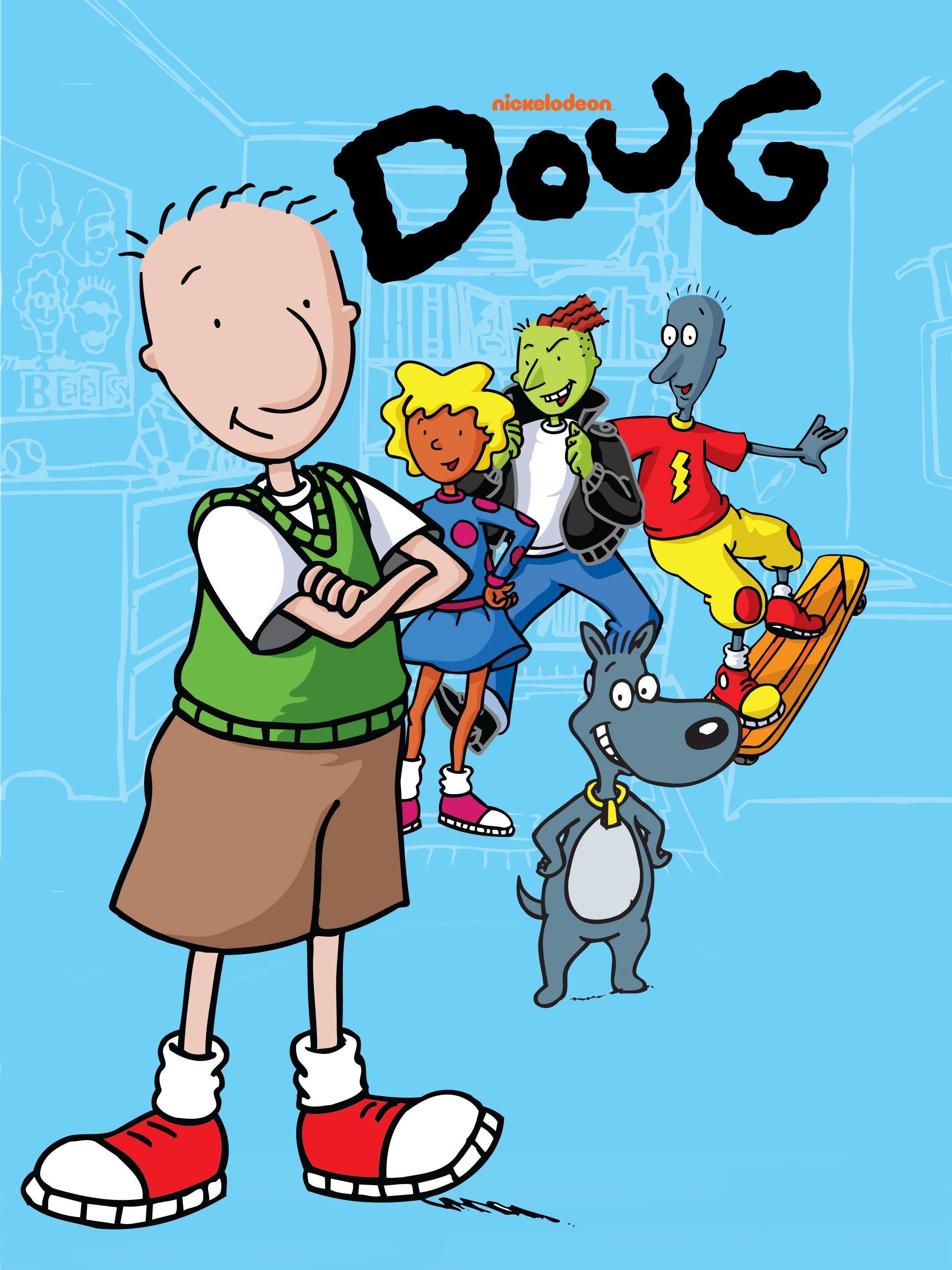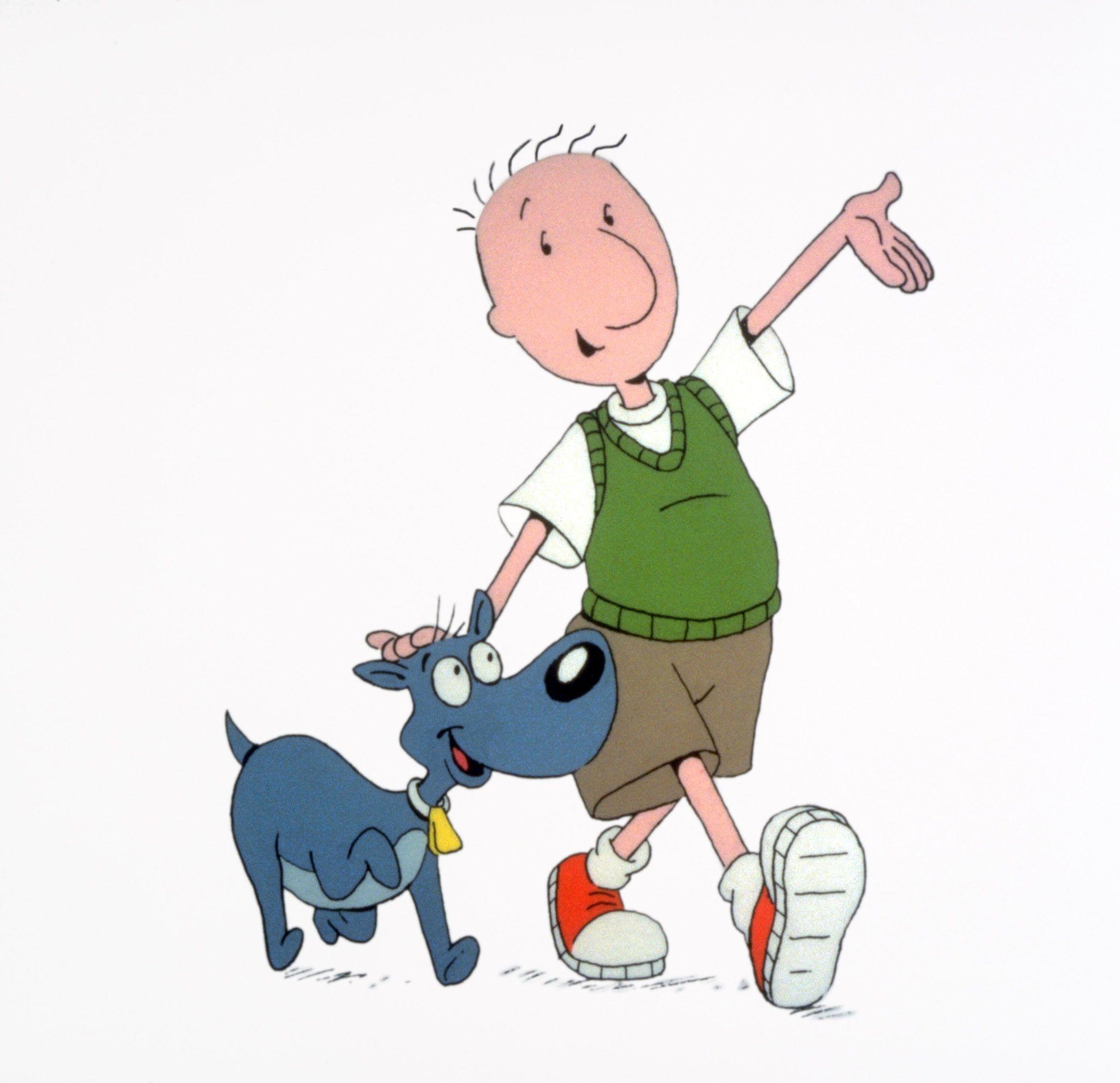Doug E Doug - A Look Back At Bluffington
For many who grew up in the early nineties, there's a particular animated show that holds a truly special spot in their memories. It's the kind of program that felt like peeking into someone's actual diary, a gentle yet honest look at what it was like just trying to make it through the everyday happenings of being a kid. This series, often simply called "Doug," came from the creative mind of Jim Jinkins, and it was brought to life by the folks at Jumbo Pictures, too it's almost like they bottled up a bit of childhood for us to enjoy.
This particular animated tale first made its way onto television screens on Nickelodeon, kicking off its initial run in the summer of 1991 and wrapping up that chapter in early 1994. After that, the show moved to ABC, where it continued to share more stories with its audience, you know, extending its time on the air. It really had a presence across a couple of big networks, which is pretty neat for a cartoon.
At its heart, the series followed the happenings of a young fellow as he navigated the ins and outs of growing up, meeting new pals, experiencing first crushes, and just generally figuring out how to get by in the sixth grade. It was a show that, in some respects, felt incredibly real, even with its bright colors and quirky characters, giving viewers a glimpse into the thoughts and feelings of its main character, Doug Funnie, as he wrote them down in his journal, which is actually kind of a big deal.
Table of Contents
- The Origin Story of Doug E Doug
- Key Details About Doug E Doug
- What Made Doug E Doug So Special?
- Who Were the Folks Bringing Doug E Doug to Life?
- How Did Doug E Doug Explore Growing Up?
- What Was the Deal with Doug E Doug's Journal and Imagination?
- Where Did Doug E Doug Call Home?
- Why Does Doug E Doug Still Matter to Many?
The Origin Story of Doug E Doug
The animated series we're talking about, "Doug," really came from a simple, yet rather profound idea cooked up by Jim Jinkins. He had this vision for a program that would genuinely capture the feelings and daily events of a young person's existence, a show that wasn't about superheroes or fantastical creatures, but about the very ordinary, often funny, sometimes a little bit awkward, moments that make up childhood. It was, you know, a different kind of animated tale for its time, focusing on relatable experiences.
Jumbo Pictures, the company that helped make this vision a reality, worked alongside Jinkins to shape the look and feel of Bluffington and its residents. They took Jim's initial thoughts and illustrations and turned them into the vibrant, memorable world that so many people came to adore. The creation process involved, like, putting together a team of talented people who understood the goal: to craft a series that would speak to kids about their own lives, offering a sense of connection and perhaps a bit of comfort, too.
Key Details About Doug E Doug
| Creator | Jim Jinkins |
| Original Network | Nickelodeon (1991-1994), then ABC |
| Run Dates | August 11, 1991 - January 2, 1994 (Nickelodeon); continued on ABC |
| Main Voice Cast | Billy West, Constance Shulman, Fred Newman, Doug Preis |
| Setting | Bluffington |
| Main Character Trait | Keeps a personal journal, uses imagination |
What Made Doug E Doug So Special?
So, what was it about this show, "Doug," that truly made it stand out from the crowd? A big part of its appeal came from its sincere portrayal of what it felt like to be a kid, just trying to figure things out. Doug Funnie, the main character, wasn't some larger-than-life figure; he was, in a way, every kid. His worries about school, his shyness around a crush, his efforts to be a good pal – these were feelings and situations that viewers could easily see themselves in. It created a bond, a feeling of "I get that," which is pretty powerful.
The series really focused on the small, everyday happenings, rather than big, sweeping adventures. It showed the humor and sometimes the challenges in things like trying to get a haircut you didn't want, or dealing with a school bully, or simply trying to impress someone you liked. This approach, you know, of keeping things grounded and real, made the stories feel very personal and approachable. It wasn't about saving the world; it was about getting through Tuesday, and that felt incredibly genuine to many watching.
Who Were the Folks Bringing Doug E Doug to Life?
The characters in "Doug" became so memorable, and a huge reason for that was the wonderful group of voice performers who gave them their unique sounds and personalities. Billy West, for example, lent his voice to Doug himself, giving him that slightly anxious, thoughtful tone, and also to Roger Klotz, the neighborhood troublemaker, making him sound just a little bit smug. It's pretty amazing how one person can create such distinct voices, actually.
Then you had Constance Shulman, who provided the voice for Patti Mayonnaise, giving her a warmth and kindness that made her such a beloved figure. Fred Newman was the voice behind Skeeter Valentine, Doug's best buddy, and also Mr. Dink, the neighbor with all the "Honk honk!" gadgets, which was kind of funny. Doug Preis also played a part in bringing various characters to the audio landscape of Bluffington. Their combined efforts, you know, really made these animated figures feel like real people you might know, adding so much to the show's overall charm and appeal.
How Did Doug E Doug Explore Growing Up?
The program did a really good job of showing the different parts of growing up, especially through Doug's eyes. It looked at the ins and outs of friendship, like when Doug and Skeeter had a disagreement or when Doug tried to help a friend who was feeling down. These moments felt very true to life, portraying the ups and downs that come with having close pals, which is a big part of childhood, you know.
And then there were the crushes! Doug's feelings for Patti Mayonnaise were a constant thread, showing the awkwardness, the hopeful moments, and the occasional misunderstandings that come with liking someone a whole lot. School life was also a big focus, from trying to get good grades to dealing with the school bully, Roger. The show really captured that time in a young person's life when everything feels like a test, and you're just trying to figure out who you are and where you fit in, which, basically, is what growing up is all about.
What Was the Deal with Doug E Doug's Journal and Imagination?
One of the coolest things about "Doug" was how the main character, Doug Funnie, kept a journal. This wasn't just a random detail; it was actually a window into his innermost thoughts and feelings. Every episode, we got to hear what Doug was really thinking, his worries, his hopes, and his observations about the world around him, which gave the show a very personal touch. It was, you know, a clever way to let the audience in on his private world.
His imagination was another huge part of the show. When things got tough or a little bit scary, Doug would often retreat into his mind, transforming himself into his superhero alter-ego, Quailman, or imagining various fantastical scenarios. This creative escape wasn't just for fun; it showed how kids use their inner worlds to cope with challenges and to make sense of what's happening around them. It's a pretty powerful idea, that, your own mind can be a place of adventure and problem-solving, even when you're just a kid in Bluffington.
Where Did Doug E Doug Call Home?
The setting for "Doug" was a place called Bluffington, and it was more than just a backdrop; it felt like a character in itself. Bluffington was depicted as a fairly typical American town, complete with its own unique spots like the Honker Burger, the local hangout, and Mr. Dink's house, which was always full of the latest, sometimes strange, gadgets. The town had a certain feel to it, a bit quirky but also very familiar, making it easy for viewers to imagine themselves living there, too.
The way the town was shown, with its distinct neighborhoods and various businesses, helped support the stories being told. It gave Doug and his friends places to go, things to do, and provided a consistent environment for all the daily adventures and challenges. Bluffington, in some respects, felt like a safe and understandable place for a young boy to grow up, providing a sense of community and stability, even when Doug's personal world felt a little bit chaotic, you know, as it often does when you're a kid.
Why Does Doug E Doug Still Matter to Many?
Even though the show first aired many years ago, "Doug" still holds a special place in the hearts of a lot of people, and there are some good reasons for that. The themes it explored – friendship, dealing with school, having a crush, and just growing up – are truly timeless. These are experiences that pretty much everyone goes through, no matter when or where they grew up, so the show's messages remain relevant, which is pretty cool.
It also stands as a good example of a kind of cartoon that focused on character development and relatable storytelling, rather than just slapstick humor or action. The show encouraged viewers to think about their own feelings and how they fit into the world, which is a rather meaningful thing for a children's program to do. Its continued popularity, you know, really speaks to its enduring appeal and its quiet but significant impact on a generation of viewers.

Doug - Rotten Tomatoes

Doug Funnie Wallpapers - Top Free Doug Funnie Backgrounds - WallpaperAccess

Doug (TV Series 1991–1994) - IMDb